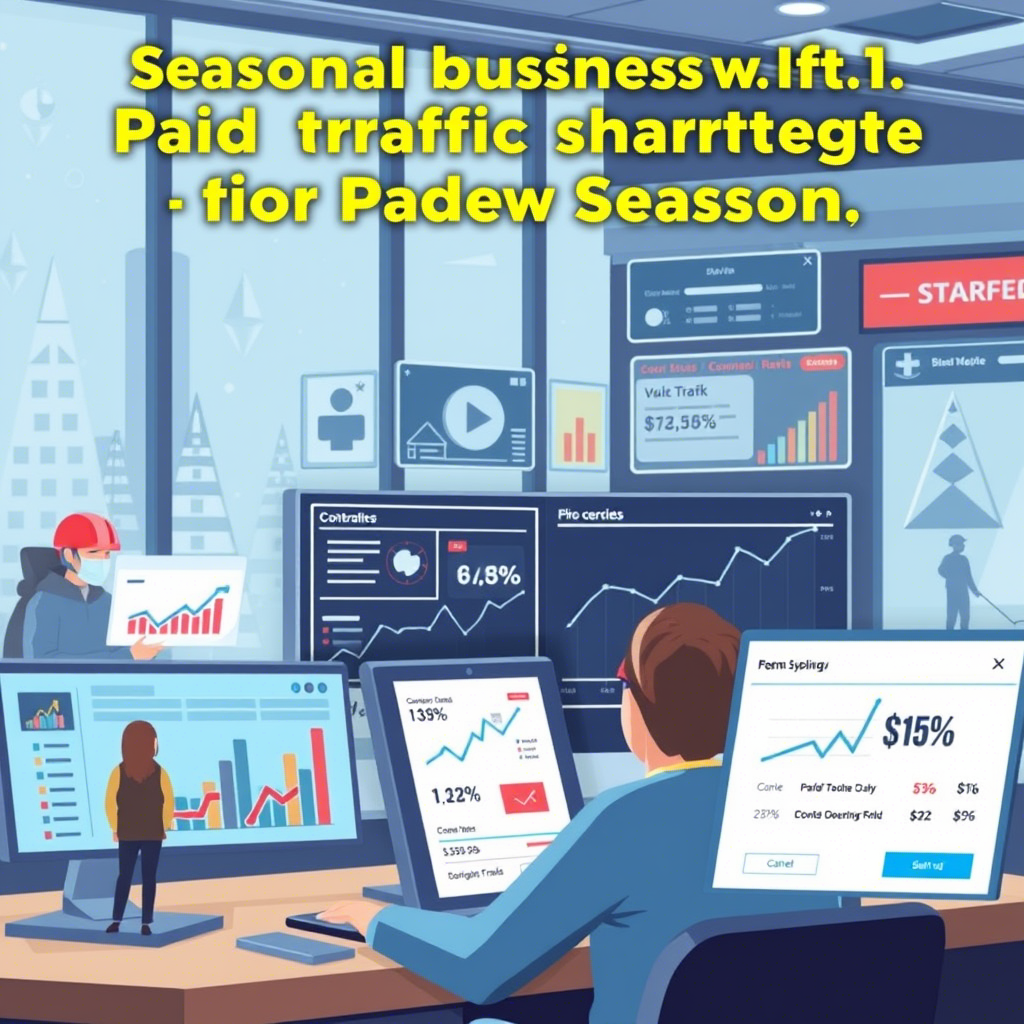Seasonal businesses face a unique challenge: how to capitalize on high-demand periods to maximize revenue while ensuring sustainable growth.
Whether you run a holiday-focused eCommerce store, a summer vacation rental service, or a winter sports business, paid traffic strategies can make or break your peak season success.
In this article, we’ll explore how seasonal businesses can leverage paid advertising effectively, optimizing their campaigns to capture the right audience at the right time. You’ll learn how to allocate budgets, craft compelling ads, and use data-driven insights to maximize conversions.
1. Understanding and Preparing for Seasonal Demand
The first step in optimizing paid traffic is understanding the seasonal trends of your business. Without a clear grasp of when and why demand spikes, you risk wasting ad spend on ineffective campaigns.
How to Identify Your Seasonal Peaks:
- Analyze past sales data: Use tools like Google Analytics, Facebook Insights, or Shopify reports to track sales trends from previous years.
- Study search trends: Utilize Google Trends to see when people start searching for products or services like yours.
- Monitor competitor activity: If your competitors increase ad spend during a certain period, it’s a strong signal of rising demand.
Once you’ve identified these high-demand periods, plan your campaigns well in advance. The earlier you start preparing, the better your chances of maximizing ROI.
2. Allocating and Scaling Your Advertising Budget
Proper budget allocation is crucial for seasonal businesses. Your ad spend should be proportional to expected demand, ensuring you capture the most leads without overspending.
Best Practices for Budget Allocation:
- Front-load spending: Allocate a higher percentage of your budget in the weeks leading up to peak season to build awareness.
- Use automated bidding: Platforms like Google Ads and Facebook Ads offer automated bidding strategies that adjust spend based on real-time performance.
- Diversify across platforms: Google Ads (search and display), Facebook Ads, Instagram, and TikTok can all drive seasonal traffic—test multiple channels.
By strategically managing your budget, you can maximize visibility during critical times while maintaining cost efficiency.
3. Crafting High-Impact Seasonal Ad Campaigns
Your ad content needs to resonate with your audience’s seasonal needs and emotions. Generic messaging won’t cut it when competitors are also ramping up their marketing efforts.
Elements of a Successful Seasonal Ad:
- Seasonal urgency: Use phrases like “Limited-Time Offer,” “Holiday Special,” or “Only Available This Season” to drive urgency.
- Eye-catching visuals: High-quality images and videos tailored to the season enhance engagement.
- Tailored offers: Discounts, bundles, and exclusive perks encourage immediate action.
- Localized messaging: If applicable, customize ads based on regional trends (e.g., promoting beachwear in summer vs. ski gear in winter).
Testing different creatives and adjusting based on performance data ensures your ads remain relevant and impactful throughout the season.
4. Leveraging Retargeting and Lookalike Audiences
Not everyone converts on their first visit. Retargeting allows you to re-engage potential customers who have shown interest but haven’t completed a purchase.
Key Retargeting Strategies:
- Dynamic product ads: Show potential customers the exact products they viewed on your website.
- Cart abandonment reminders: Send personalized ads with incentives (like free shipping) to users who left items in their cart.
- Event-based retargeting: Engage users based on their interactions, such as watching a video ad or signing up for a newsletter.
In addition to retargeting, lookalike audiences allow you to find new potential customers who share similar characteristics with your best existing customers. Platforms like Facebook and Google can analyze your current buyers and target similar audiences, helping you expand your reach efficiently.
5. Measuring Performance and Optimizing in Real-Time
Seasonal campaigns need constant monitoring to ensure maximum performance. Unlike evergreen campaigns, you have a limited window to make adjustments and optimize results.
Metrics to Track:
- Click-through rate (CTR): Indicates how compelling your ads are.
- Conversion rate: Measures how many visitors take the desired action.
- Return on ad spend (ROAS): Determines if your ad investment is profitable.
- Customer acquisition cost (CAC): Helps assess the cost-effectiveness of your campaigns.
Optimization Tactics:
- A/B test ad creatives and headlines to see which version performs best.
- Adjust targeting settings based on real-time engagement and conversion data.
- Shift budget towards high-performing ads and pause underperforming ones.
Regular performance analysis ensures you stay ahead of the competition and maximize ROI during peak seasons.
Conclusion
Paid traffic can be a game-changer for seasonal businesses—if executed correctly. By understanding demand cycles, strategically allocating budgets, crafting engaging ads, leveraging retargeting, and optimizing campaigns in real-time, you can maximize your revenue during high-demand periods.
Are you ready to take your seasonal business to the next level? Start planning your paid advertising strategy today and get ahead of the competition!
What’s your biggest challenge with seasonal advertising? Share your thoughts in the comments!




